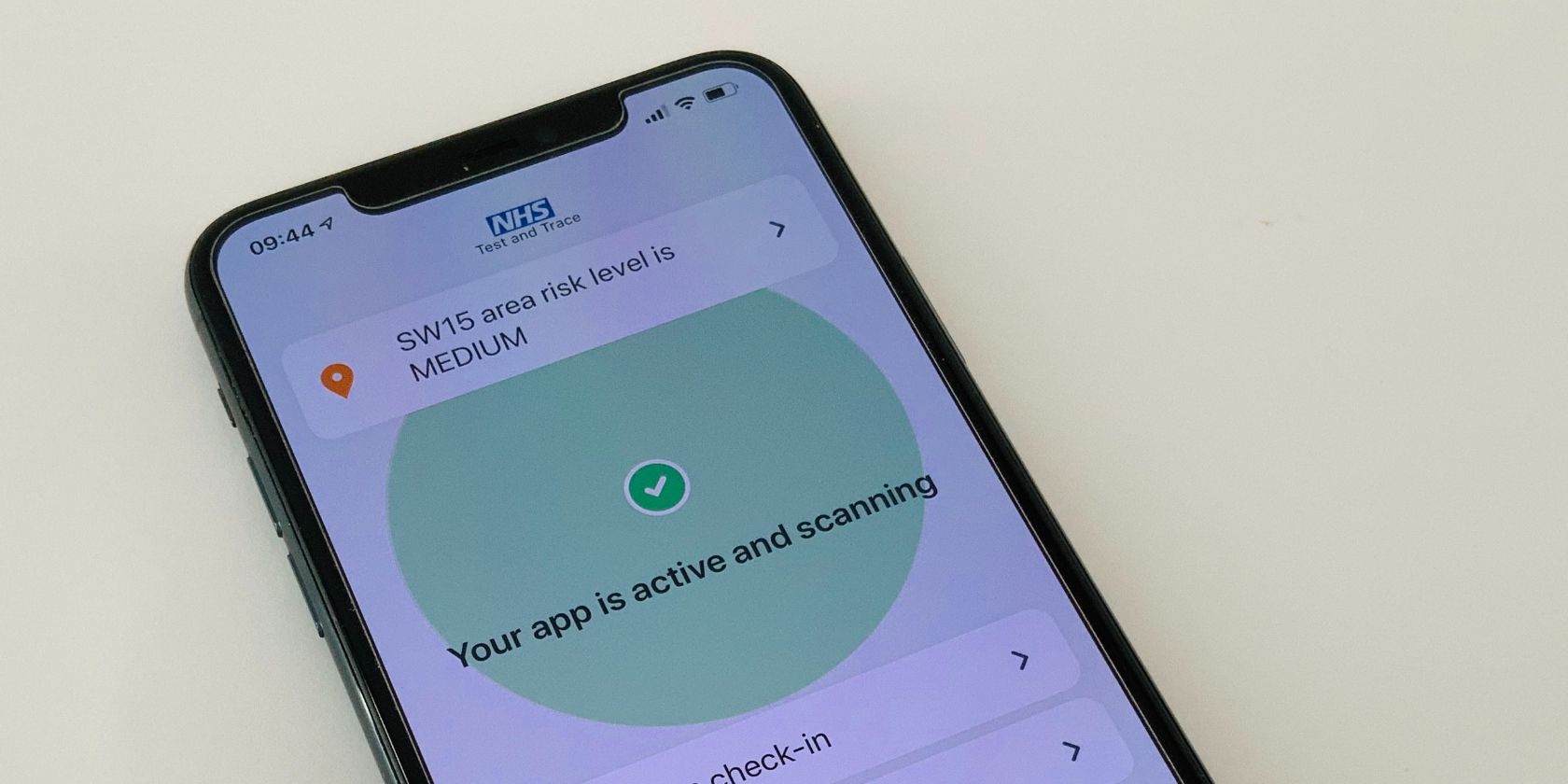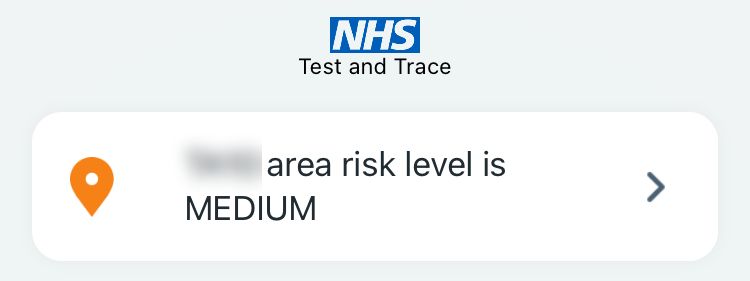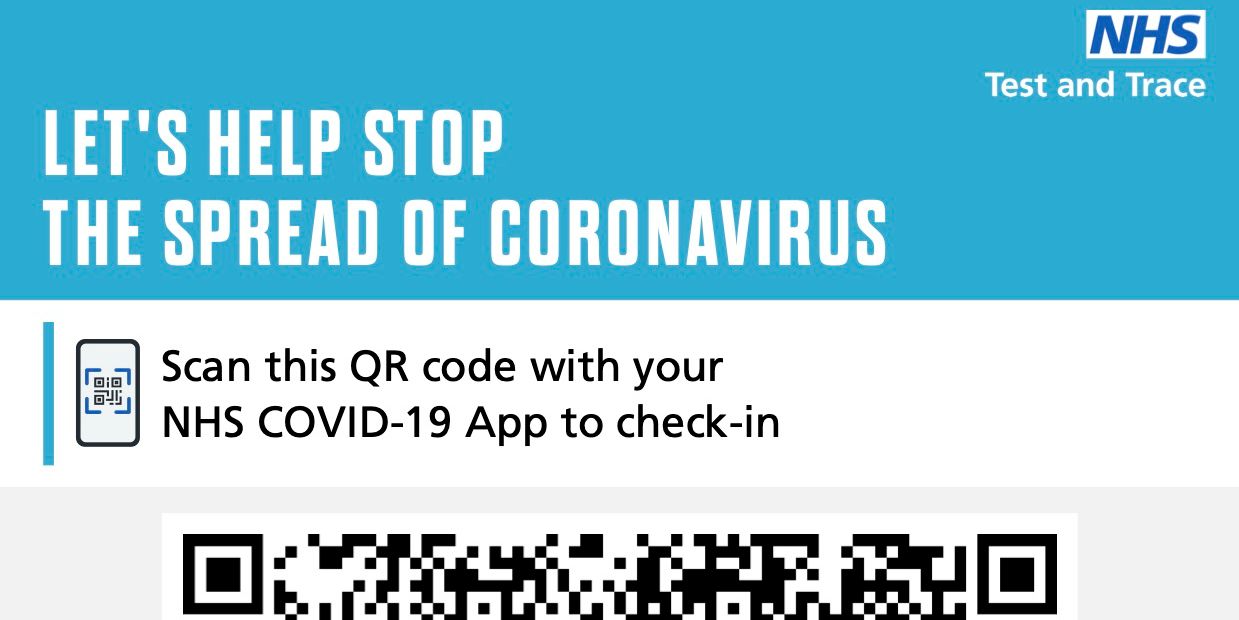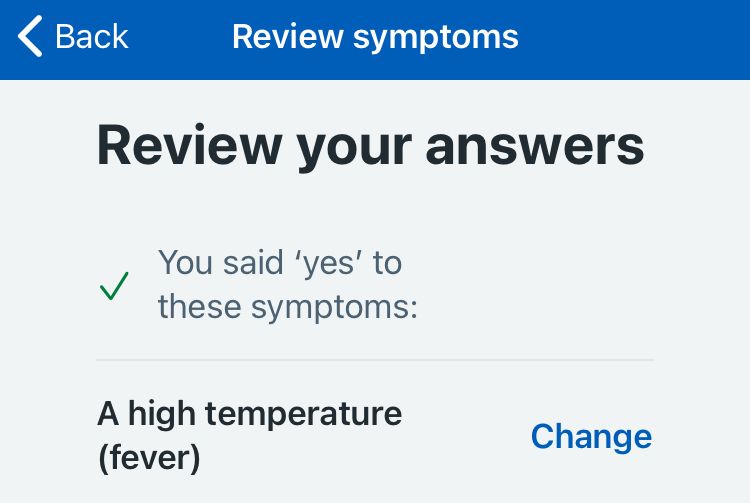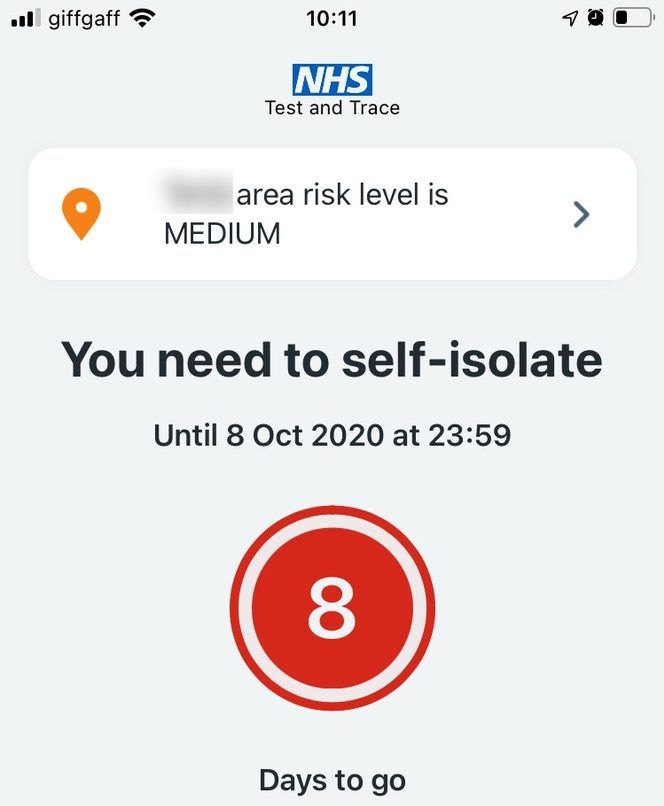The UK government has released a contact-tracing app, known as NHS COVID-19, for England and Wales. If you haven't already, learn how to get this app on your iPhone or Android device and use it to protect against the spread of coronavirus.
What Is the NHS COVID-19 App?
The UK government developed this app to stem the tide of coronavirus infections in England and Wales. It uses Bluetooth on your iPhone or Android device to keep track of other app users you come into close contact with. The app then sends you a notification if any of these people later test positive for COVID-19.
The NHS COVID-19 app uses technology developed by Apple and Google to maintain user privacy throughout this process.
You can also use it to receive local alerts, check in at different venues, or check your symptoms and order a coronavirus test.
How to Get the NHS COVID-19 App
The NHS COVID-19 app is available to download for free from the App Store or Google Play store on an iPhone or Android smartphone. You must be running at least iOS 13.5 or Android 6.0 for the app to work on your device.
Simply open the App Store or Google Play store on your smartphone and search "NHS COVID" to find the app, then tap Get or Download to install it. Make sure you don't download any fake contact tracing apps by mistake.
Alternatively, use the links below on your smartphone to jump straight to the NHS COVID-19 app in the relevant store.
Download: NHS COVID-19 for Android | iOS (Free)
How to Use the NHS COVID-19 App
After downloading and installing the NHS COVID-19 app on your smartphone, open it to set up your preferences.
Read through the privacy notice to learn how the app uses your data. After agreeing, enter the first half of your postcode to receive local coronavirus alerts for your region.
When prompted, choose to Enable COVID-19 Exposure Logging and Notifications. This turns on contact tracing for your device.
Be sure to Enable notifications as well, to let the app notify you if you need to self-isolate.
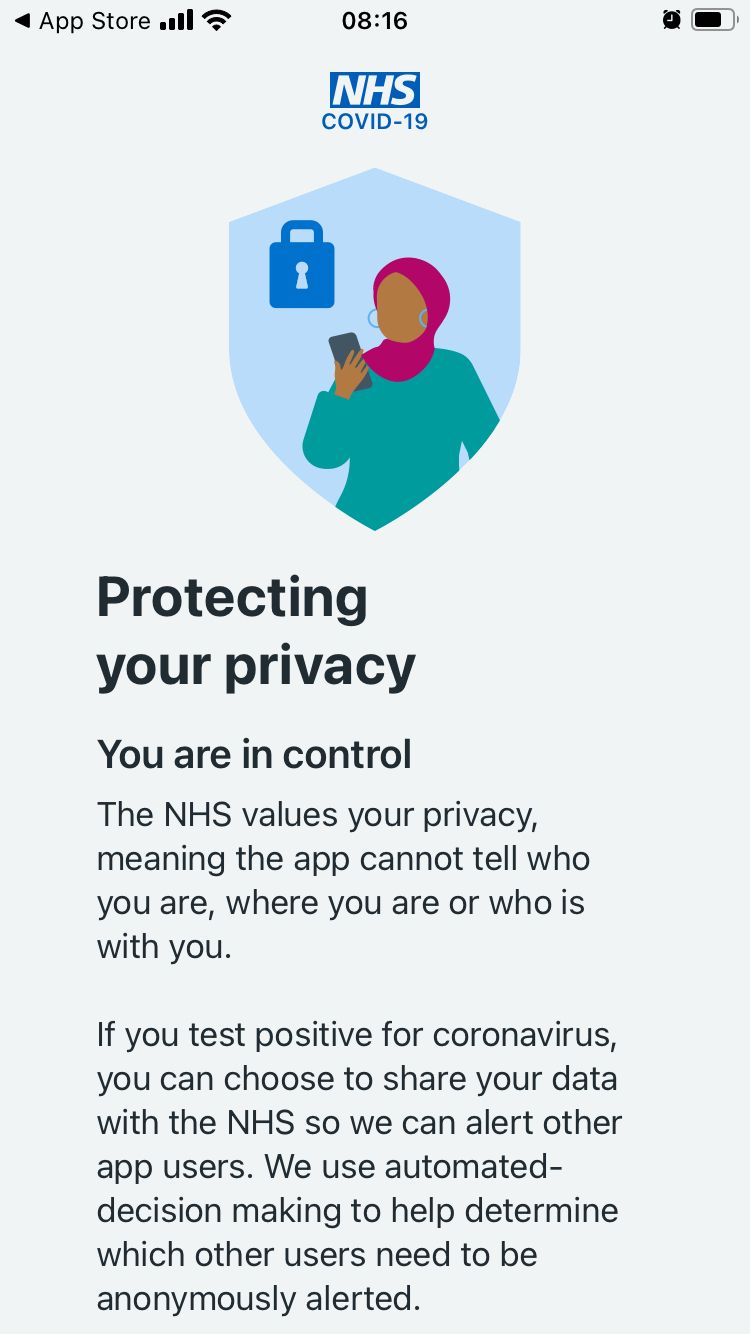
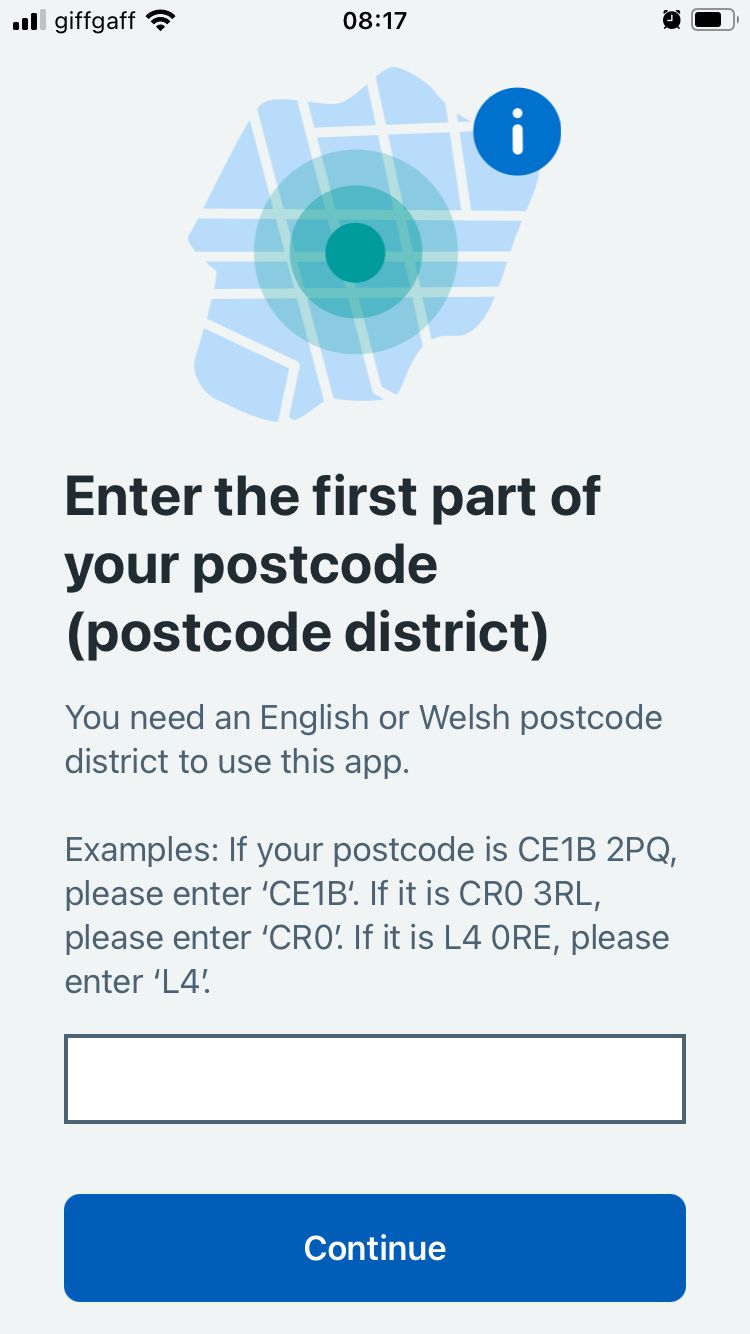
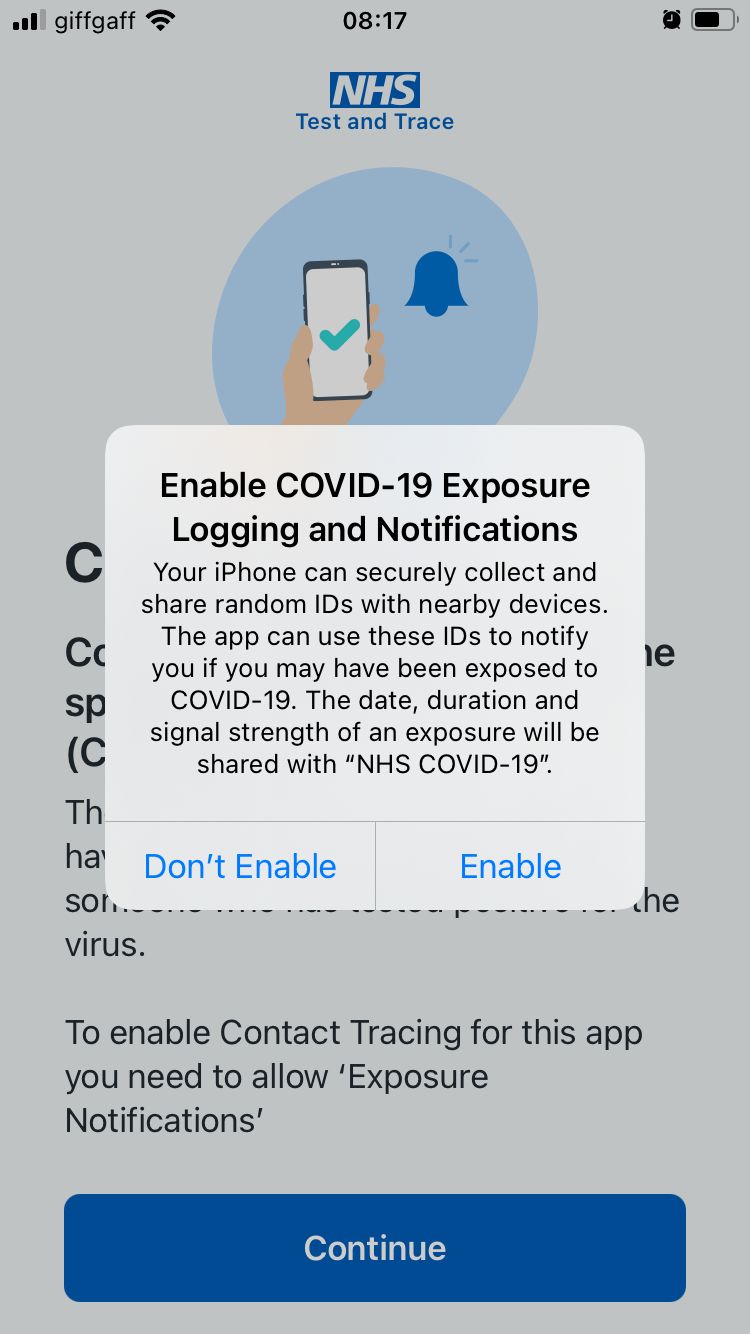
Contact Tracing
After setting up the NHS COVID-19 app, it automatically measures Bluetooth signal strength to learn when you spend 15 minutes or longer within two meters of another person who is also using the app.
If that person reports a positive COVID-19 test result after you come into contact with them, the app notifies you to self-isolate and check your symptoms.
All you need to do is keep your smartphone on you with Bluetooth turned on. The app should only use five percent or less of your battery power.
To stop contact tracing, scroll to the bottom of the home page on the NHS COVID-19 app and turn off the Contact tracing button. You can also set a reminder to turn contact tracing on again after a certain period of time.
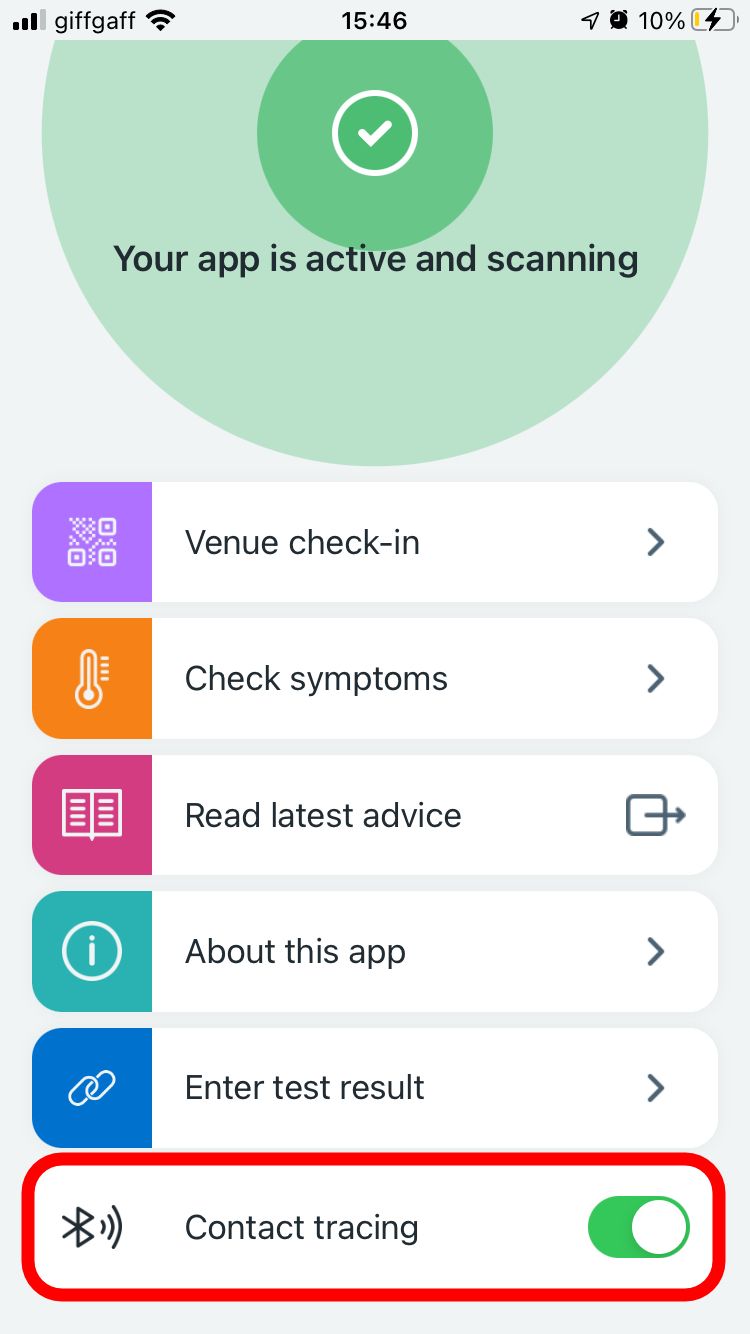
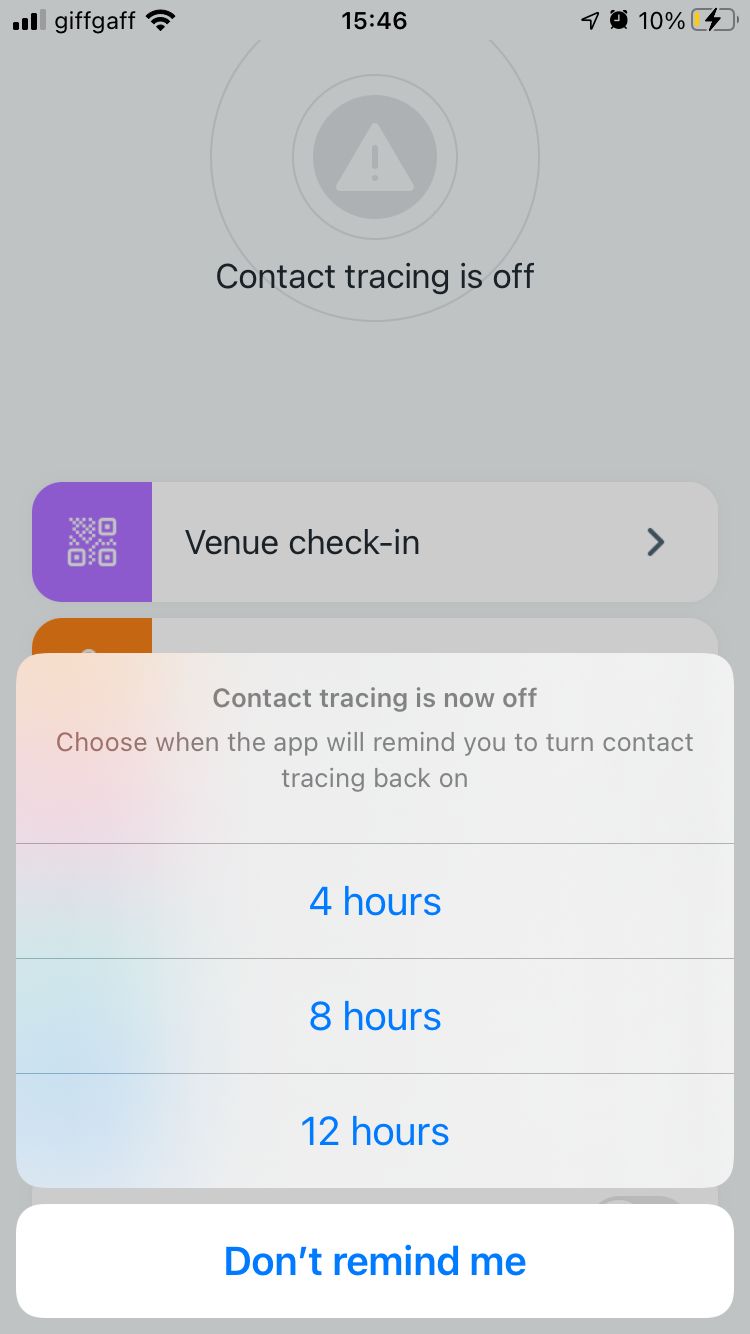
Local Alerts
At the top of the NHS COVID-19 app you can see the risk level for your area: low, medium, or high. This changes depending on the infection rates and guidance for your region and those neighboring it.
To change your local area, go to About this app > Manage my data and Edit the Postcode District. You only need to do this if you change where you live.
Venue Check-In
As you visit supermarkets, restaurants, hairdressers, and other businesses, you can use the venue check-in feature to learn if anyone else who visited those places at the same time tests positive for COVID-19.
To check in, look for an NHS QR code poster at the venue. Then tap the Venue check-in button in the NHS COVID-19 app and use the camera on your smartphone to scan the QR code.
Check Symptoms
If you're feeling unwell, tap Check symptoms to compare your symptoms to known COVID-19 symptoms. The app asks if you have a high temperature, a continuous cough, or a change to your taste and smell. It then asks when you started feeling this way.
The NHS COVID-19 app tells you if you might have coronavirus. If this is the case, it also tells you how long to self-isolate for and presents a link to Book a free test.
Isolation Timer
If you need to self-isolate for any reason, the NHS COVID-19 app presents a self-isolation timer so you know how long you need to quarantine yourself for. This timer tells you how many days are left to go and at what date you can stop self-isolating.
The isolation timer starts automatically if you receive an alert that you came into contact with someone who tested positive for coronavirus. It also does this if you report your own coronavirus symptoms, or report a positive test result for yourself.
The length of the self-isolation timer varies based on your symptoms, test results, and the people you come into contact with. Luckily there are plenty of shows to watch during lockdown to make a long isolation period go faster.
Enter Test Results
If you test positive for coronavirus, you should enter your test results into the NHS COVID-19 app to alert other people you've come into close contact with.
These alerts are anonymous, so there's no need to worry about other people learning you have coronavirus. Similarly, there is no way for you to know who receives a notification based on your test results.
If you booked your coronavirus test through the NHS COVID-19 app, it uploads your results automatically.
If you booked your coronavirus test outside the app, go to the Enter test result page and enter the code issued with your test result. You can get this from the website or hospital where you booked your test.
Is the NHS COVID-19 App Safe to Use?
The idea of a government app tracking your location is an unsettling one. It's certainly wise to learn as much as you can about how the NHS COVID-19 app works, so you can make an informed decision.
But generally speaking, it's safe to use and shouldn't compromise your privacy.
This is in part because the NHS COVID-19 app doesn't store any location data. It only exchanges anonymous ID tags, which are securely stored on your device, rather than uploading to a cloud-based server. This makes the NHS COVID-19 app as secure as everything else locked behind your smartphone passcode.

